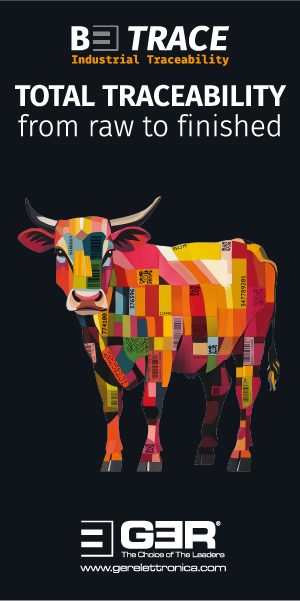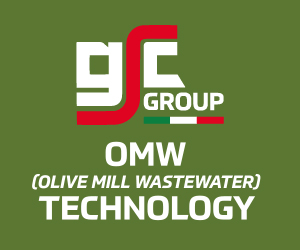Market Intelligence - 06.07.21
Macroeconomics
The situation between the major powers remains relatively tense. For many people, especially in the western world, recent decades have been characterised by security and peace. Many no longer remember the times of the Cold War and the critical situations that sometimes arose. The idea of a serious confrontation is no longer present in most people’s minds. But the developments of the last few years have considerably reduced the process of rapprochement, acceptance and willingness to talk.
The covid-19 pandemic is developing differently around the world. While infections in Europe, with some exceptions, remain at a low level overall, they are rising again in other countries and it is unclear whether they can be brought under control quickly. In particular, the new Delta variant is obviously much more contagious and thus a massive threat in countries where the number of vaccinations is far from sufficient. In Europe, it remains to be seen if travel in connection with the European Football Championship and the summer holiday season will lead to a significant increase in infections after the summer. It is encouraging that the possibility to vaccinate more and more people is continuously increasing owing to a considerably improved supply of vaccine.
There continues to be some positive economic news. The labour market in the US is offering more job openings, interest rates remain low, real estate prices are rising in almost all countries and the stock markets also remain at, or near, record highs.
The price of oil continues to be well above $70 a barrel owing to good demand. If gold is indeed a safe haven and a hedge against inflation, investors do not seem to have too much fear at the moment. The troy ounce of gold cannot keep levels above the level of $1800 per ounce.
Equity markets remain an attractive investment and most indices are holding their levels, which remain at, or just below, record levels.
Leather Pipeline
The end of the first half of a calendar year does not mark the same dividing line in the leather industry. The cycle in the leather industry runs from September to April, interrupted only by Christmas and New Year celebrations. Late spring and summer are usually phases of transition and reinvention.
The pandemic, among many other things, has had a major impact on this rhythm. Think back a year. It was the months from May to July 2020 that were the ones that most disrupted and affected the economic cycle. It was the time of an almost complete standstill in economic and social activity. People were in lockdown, many businesses were closed or in emergency mode, confined only to keeping vital areas functioning. It was a time when many leather factories around the world either stopped production completely or reduced it significantly. This happened partly because of necessary measures against the coronavirus pandemic and partly because of the situation among their customers and among end consumers. At the same time, of course, the demand for food remained constant and so did most meat production. There were only short-term interruptions at meat plants owing to covid-19 outbreaks. As a consequence, the normal outflow of by-products from the meat industry may have stuttered, but it did continue and in some parts of the world, there were periods in which hides and skins were destroyed.
With the reopening and rapid recovery of the Chinese economy, the demand for raw materials recovered relatively quickly. In other regions of the world it took a little longer, and in some cases it took until the beginning of this year for planned production to return to normal.
If one looks at the situation in the commodity markets, one gets the impression that world demand must have increased significantly to justify current prices. It must always be taken into account that the supply situation for raw material is relatively inelastic because hides and skins are a by-product of meat production. There are regional shifts in terms of availability and supply of raw material, but on a global level the supply situation has not changed significantly.
The price of hides and skins as raw material for the leather industry will always fluctuate. The price can only ever be justified by the possible sales price for the finished product, leather. As with all raw materials, there is no single price for everything. Luxury goods and niche products achieve very high added value and prices, but this tends to mean very little for mass leather production. But it is the factor that determines general perceptions and it is essentially guided by two parameters. First, there is the short-term supply-and-demand situation of the raw material. In Europe, at least, it is also assumed that consumers also base their decisions on issues such as sustainability and animal welfare.
The strong swings in prices that we have seen in the last 15 months raises old questions and problems. Fast and frantic price changes tend not to bother the meat industry and suppliers and some even see them as a commercial advantage. For the leather industry, on the other hand, fast and hectic price fluctuations have never been good news. Leather prices are much less elastic than raw material prices and the range is much narrower. Any change in raw material prices that exceeds the range of leather price elasticity, upwards and downwards, is a problem. For suppliers of raw material, on the other hand, these parameters are completely irrelevant.
Empirical evidence shows time and again that fluctuations of more than 20% are counterproductive on both sides and are ultimately met with corresponding corrections. Admittedly, these findings and theories do not provide a reliable tool for action because neither the extent nor the duration of the fluctuations that exceed the theoretical 20% can be reliably predicted.
Why have we revisited these theoretical and very fundamental questions in the leather pipeline at this point in time? We were already in a phase of slow but continuous deflation in hide and skin prices before the covid-19 crisis. This was partly because alternative materials were much cheaper and easier to plan, and partly because standard leather types had become easy to replace. The special characteristics of leather and the advantages of the material were pushed further and further into the background by industrial mass production and leather could no longer command a higher price.
The developments of the last year then caused prices to collapse and leather, an attractive material with a good image, could very quickly be produced again at competitive prices. This opportunity was, of course, immediately taken up by the Chinese industry, which in the end still operates almost exclusively on the basis of price. In short: raw material was cheap enough to produce and sell leather at very good profits.
Twelve months on, the situation has changed completely and raw material prices have increased, perhaps by as much as four times. With inflationary prices, the break-even point was quickly passed. With the exception of high-end luxury goods, we can assume that all manufacturers reached this critical point in their calculations sometime in the course of this spring.
Raw materials and production continue to flow relatively undisturbed, especially when the big producers play their cards cleverly. In order to keep the flow of goods intact and to defend average revenues, various price levels are being set at the moment. Of course, these are not generally publicised and the system continues to rule. Cui bono?
Large, solvent, secured buyers receive significant price concessions so that the flow of goods is ensured for large volumes. Smaller buyers then serve to improve average revenue and have to cope with significantly higher prices owing to their lack of size and purchasing power. This is the market and, of course, it cannot be avoided. Nevertheless, it would be naïve to assume that this can continue without consequences. A certain number of smaller producers can undoubtedly achieve better revenues, but even this has its limits.
The fundamental questions that arise from this remain unanswered at the moment. Where does leather stand today in the price grid of all material possibilities and what significance will the changes in logistics have in the coming months? Besides the question of price, the availability of materials is also important. A look at the supply of semiconductors may serve as a reminder of this.
It is quite conceivable that leather will be perceived as a material that is available in most regions and can, therefore, be planned more quickly. The greatly increased prices of many other products and raw materials and the massive delays in delivery must lead to a rethink in the purchasing departments of many manufacturers. Price is no longer the only factor. This situation may also be temporary, but we are convinced that there will have to be a rethink.
This will require a re-evaluation in the use of materials and this will give leather the opportunity to regain its position beyond the consideration of price and processing costs. However, management teams in large companies are no longer characterised today by flexibility and adaptability and, therefore, it is difficult to predict exactly when such a re-evaluation will take place. In any case, the balance between price, delivery reliability, production and transport costs will be a completely new one for some time.
The next conceivable time for any major change, of course, is the start of the new peak season in September. Until then, it is relatively unlikely that there will be any significant change in the basic parameters. However, suppliers and producers of hides and skins would certainly be well advised to take a close look at this whole set of questions. This would mean looking beyond next week’s deal to think about the value they can expect to place on their most significant by-product for a slightly longer period.
The fashion market remains relatively unexciting. There is increased news coming out of China that revenues for splits are currently in decline. This is surprising as the very expensive price of raw hides should support splits as a cheaper alternative material. But it also means that, at the moment, more split is being produced than the market is willing to absorb. In Europe, split prices are relatively stable, with only collagen and gelatine showing slight improvements.
For sheepskins, a slight improvement in the situation can also be seen. However, we naturally assume completely different conditions here, because apart from very high-quality skins, the price levels overall are still very low in historical terms. A clear improvement in the price of coarser wool can be observed, which, in the end, will also have a positive effect on revenues for sheepskins and lambskins, provided this trend is sustainable. There are indications that the trend may continue slowly but steadily in the second half of the year.
In the northern hemisphere we are now entering the last weeks before the summer holidays. Most leather factories will have completed their planning in the short term and only at the end of the month will they have to talk about how to organise things in the first weeks after the holidays. At least in Europe, there are very few indications at the moment that this could lead to a significant change in the supply-and-demand situation and thus also in prices.
Producers in Asia have to make a decision on how to secure supply from the end of August owing to the delayed transport chains. This means that, even without certainty about future trends in the leather pipeline, decisions have to be made about the supply of raw material. As one can see from the statistics from the US over the last few weeks, many large buyers have had no choice but to conclude corresponding contracts in order to maintain supply. The next few weeks will be interesting in that they will provide an overview of whether the confidence of the leather industry is high enough to stock up on larger quantities of raw material for the coming season. This is despite the high and currently unprofitable price levels. From this point of view, the month of July will certainly be very interesting and will point the way for the period from September onwards.
















